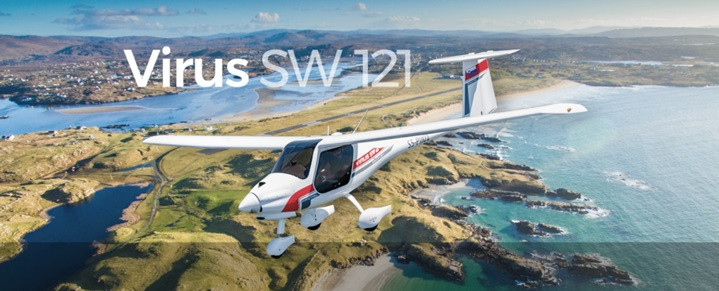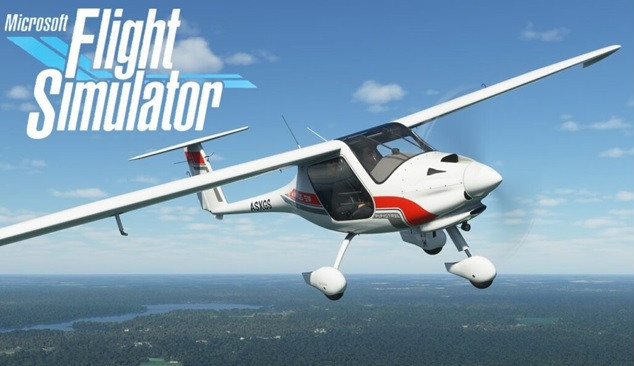Pipistrel Virus SW121 -Experience the Ultimate Luxury: Step into the World of Spacious and Comfortable Aircraft Cabins:

The Pipistrel Virus is a two-seat, single-engine light aircraft designed by Pipistrel and supplied as an ultralight, home built kit, or light-sport aircraft in Slovenia and Italy.
The Virus was introduced in 1999 and is based on the design of the Pipistrel Sinus. It comes in a variety of engines, wingspans, and undercarriage combinations. It may be fitted with an emergency recovery parachute system that covers the whole structure.
The Explorer-like Virus SW121A supersedes the well-known Virus SW121 (now Legacy). It’s not simply the most modern aircraft in its class; it’s also the culmination of Pipistrel’s 30 years of expertise in creating energy-efficient planes. For an excellent performance, clean forms, low fuel consumption, minimal noise, and power are required. It’s equipped with modern bizjet touchscreen glass cockpit technology and is certified for purposeful spins and night VFR. The Explorer is, without a doubt, the most valuable of them all!
Virus SW121, the award-winning program, is one step ahead of you. The new Virus SW 121A Explorer is the category’s best-equipped, most economical, and most comfortable two-seat EASA Type-certified aircraft.
Development & Design:
It’s a high-wing, cantilever monoplane with a T-tail and air brakes in a pod-and-boom configuration. Two chairs are arranged side by side in the cabin. It has a fixed undercarriage that may be configured as a tricycle or a tailwheel. It comes in two versions: a long wing version (12.5 m wingspans) with an 80 horsepower (60 kW) Rotax 912 engine and a short wing “SW” variant (10.7 m wingspans) with a variety of Rotax 912 and 914 engines.
Aviation journalist Paul Bertorelli has questioned the aircraft’s design for its lack of cabin occupant crash worthiness. The design has no history of causing head trauma in previous incidents. The manufacturer, however, reminds out that this type of problem is common with LSA aircraft.
The Virus SW121A is equipped with a fantastic setup:
- COM1/GPS Garmin G3X Touch System COM2/NAV Garmin GNC 355A GNC 255(COM/NAV-VOR with Antenna) Garmin GNC 255(COM/NAV-VOR with Antenna) Garmin GNC 255(COM/
- A panel of sound Brightness control for the cockpit panel on the Garmin GMA 245R Pipistrel
- Autopilot Air Speed Indicator 80mm Garmin GMC507 + Servos GSA 28 (0-200kts) TSO Altimeter, 80mm Diameter (0-20.000ft) ELT Artex 345 TSO Transponder GTX 345 S-Mode with ABS-B IN & OUT (406 Mhz)
- HSWD, AOA-based, auditory and tactile stall-warming Pipistrel “Haptic small Warming Device.”
- AirAvionics AT-1 (XPDR, ADS-B, FLARM) air traffic control system (optional)
History of Operations:

On August 10, 1999, the Pipistrel Virus took to the air for the first time. On January 20, 2000, production began. The short-wing variant was first developed in 2007. The development of Virus SW started in 2008.
The Virus won the NASA Personal Air Vehicle (PAV) Challenge in 2007 and the General Aviation Technology (GAT) Challenge in 2008.
Matev Lenari, a Slovenian pilot, undertook an around-the-world flight attempt aboard a supercharged Virus SW914, dubbed the GreenLight World Flight, on January 8, 2012. He flew past Mount Everest at an altitude of 8,944 meters (29,344 feet), about 90 meters (300 feet) above the peak’s height.
This leg of the voyage was not permitted since Nepal had cancelled his flying permission just before taking off.
He returned to Slovenia on April 19, 2012, claiming to be the first person to accomplish such a trip without a copilot and claiming to have flown 100,000 kilometres (62,000 miles) throughout the expedition.
The Indian Ministry of Defence announced an international tender on October 12, 2015, for the procurement of 194 light trainers to the Indian Air Force (72 aircraft), Indian Navy (12 aircraft), and National Cadet Corps (110 aircraft).
The Garud, a two-seat Pipistrel Virus SW 80 aircraft named after a Hindu mythological bird, will be used to instruct Flight Safety and Air Wing Cadets.
Flight Schools Will Love It:
If flying schools require one aircraft for basic instruction, another for advanced training, and maybe a third for Night VFR or intentional spins, the new Pipistrel Virus SW121A Explorer is the answer. The Virus SW121A Explorer may be used for both PPL and CPL instruction because it combines such qualities into a single plane. It’s also very beneficial for the glider community because it contains a glider towing hook!
So it’s not only a valuable asset, but it’s also the most cost-effective aircraft in the CS-LSA category! The Virus SW121A Explorer consumes an average of 18.4 litres per hour and is powered by an EASA-certified Rotax 912 S3 engine that runs on ordinary automobile gasoline.
Ideal for personal use, travel, and business:

The Virus SW121A Explorer, as its name implies, is an excellent plane for touring, with a top speed of 163 knots (300 km/h) and two 50-litre fuel tanks. The Virus SW121A Explorer is perfect for severe cross-continent and around-the-world flights, with a range of up to 4,500km, an altitude of up to 30,000ft, and a 20-hour endurance.
Your SW121A Explorer can land practically anywhere with features like all-terrain wheels, skis, and a take-off distance of only 160m (at SL).
A cabin that is comfortable, spacious, and luxurious:
You’ll find the comfort you need with adjustable pedals, headrests, and a sumptuous leather ergonomic inside with possible personalization of seat colours and outside livery.
The SW121 series’ well-known high-wing form allows for huge clear surfaces with excellent visibility. This is perfect for airborne surveillance or simply appreciating nature and terrain! The SW121A Explorer will keep you comfortable and safe on long and short flights.
Evolution:
The original Virus SW 121 was fantastic, but the Virus SW 121A Explorer is much better! The joyful realization of our long-held belief that great things can be accomplished without wasting energy or damaging the environment. Each aircraft is designed, constructed, and refined in our state-of-the-art, energy-self-sufficient factory in Ajdovscina, Slovenia. We can save the environment 180.000 kg of CO2 emissions per year by using geothermal and solar energy to power the whole production process. You may help make the world a better and cleaner place by buying the new Virus SW 121A Explorer! Our Evolution campaign embodies Pipistrel’s objective to demonstrate to the world that environmentally friendly, high-tech products are really attainable and readily available today!
Conclusion:
Finally, it must be said that the Virus SW 121 is a great choice if you want to have an exciting experience and in simple words, it’ll be made your day!
Thank you for reading this article; I hope you’ve found it useful, and feel free to share your thoughts about the Virus SW 121, and I would be more than happy to read them!

I have never been on a plane but you have provided me with a small model plane that I could fly after I learn how to fly from the flight simulator reviews you posted before. This two seater single engine plane seems to have a huge legacy behind it. So I can see why they would start calling it Legacy. Also being named Virus made me think something happened to the software. Its slim sleek design must be a breeze to sore through the air. I would love to try riding in one of these.
Thanks for the feedback. I like to provide information about each aircraft so everyone can understand.
Hi MELamin
Firstly, what an exciting and thrilling topic you have written about. I love flying. Well, commercially anyway. Unfortuantely I do not have a pilot’s license. Though, It is on my bucket list.
The Pipistrel seems to be a great aircraft for pilot training and is an award winning aircraft. It is great that the plane is energy-efficient and has low fuel consumption and produces minimal noise. Also it seems ideal for personal use and for some fun in the sky.
Great review.
Regards
Les
Thanks for the feedback. I think it is one of the great aircraft that can fly long distance and travel at reasonable speed.